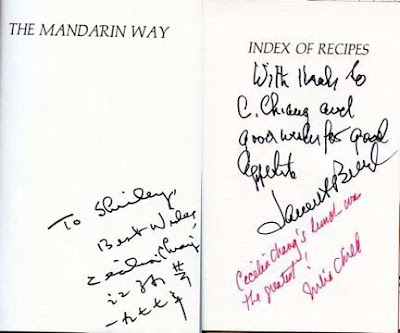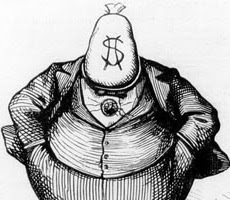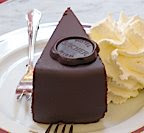
"From Those Wonderful People
Who Brought You MEDICARE PART D"
The cast of characters is amazing and everyday the plot line of
"The Health Care Movie II" keeps changing.
Who knew Tom DeLay would join "Dancing With The Stars ?"
If you enjoyed the suspense of the original drama, read on.
You'll laugh. You'll cry.
This is a true story.
The Medicare Prescription Drug, Improvement, and Modernization Act
(Pub.L. 108-173, 117 Stat. 2066, also called Medicare Modernization Act or MMA)
is a law of the United States which was enacted in 2003. It produced the largest overhaul of Medicare in the public health program's 38-year history.
The MMA was signed by President George W. Bush on December 8, 2003,
after passing in Congress by a close margin.
THE ORIGINAL SCRIPT
The chairman of the Commerce Committee, Representative BILLY TAUZIN (R-La.), coauthored the bill while negotiating a $2-million-per-year job as a lobbyist for the Pharmaceutical Research and Manufacturers of America (PhRMA), the drug industry's trade organization.
AARP, the (then) 35 million member senior organization, played a key behind-the-scenes role in engineering the legislation, helped by none other than former House Speaker Newt Gingrich. (Readers will recall that, at one time, Newt said that all entitlement programs should shrink away to nothing.) BILL NOVELLI, AARP's Executive Director, actually wrote an introduction to Gingrich's book on health care. Reportedly, more than 15,000 members resigned after the information about AARP's involvement became known.
Former U.S. House Majority Leader DICK ARMEY, an influential Republican working as Chairman of the limited government group FreedomWorks, wrote an op-ed the day of the vote in The Wall Street Journal opposing the bill.
THE ACTION ON THE FLOOR
The bill came to a vote at 3 a.m. on November 22. After 45 minutes, the bill was losing, 219-215, with David Wu (D-OR) not voting. Speaker Dennis Hastert and Majority Leader TOM DELAY sought to convince some of dissenting Republicans to switch their votes, as they had in June. Ernest Istook (R-OK), who had always been a wavering vote, consented quickly, producing a 218-216 tally. In a highly unusual move, the House leadership held the vote open for hours as they sought two more votes. Then-Representative Nick Smith (R-MI) claimed he was offered campaign funds for his son, who was running to replace him, in return for a change in his vote from "nay" to "yea." After controversy ensued, Smith clarified no explicit offer of campaign funds was made, but that that he was offered "substantial and aggressive campaign support" which he had assumed included financial support. ( former Majority Leader Tom DeLay (R-Tex.) and Representative Candice Miller (R-Mich.) tried to bribe him with political favors to change his vote — an infraction for which the House Ethics Committee later admonished them.
About 5:50 a.m., the Republican leadership convinced Butch Otter (R-ID) and Trent Franks (R-AZ) to switch their votes. With passage assured, Wu voted yea as well, and Democrats Calvin M. Dooley (CA), Jim Marshall (GA) and David Scott (GA) changed their votes to the affirmative. But Brad Miller (D-NC), and then, Republican John Culberson (TX), reversed their votes from "yea" to "nay". The bill passed 220-215.
ONE MONTH LATER
... the ten-year cost estimate was boosted to $534 billion, up more than $100 billion over the figure presented by the Bush administration during Congressional debate. The inaccurate figure helped secure support from fiscally conservative Republicans who had promised to vote against the bill if it cost more than $400 billion. It was reported that an administration official, TOM SCULLY, had concealed the higher estimate and threatened to fire Medicare Chief Actuary RICHARD FOSTER if he revealed it.
IN JULY 2004, it was revealed that Thomas A. Scully, Medicare Administrator, had ordered Richard Foster, a Medicare actuary, to withhold information from Congress on pain of termination. Foster had projected that the bill would cost at least 139 billion dollars more than the White House was claiming.
EARLY 2005, the White House Budget had increased the 10-year estimate to $1.2 trillion.
THE HEALTH CARE MOVIE II, 2009
REPEAT PLAYERS
BILLY TAUZIN: Billy Tauzin was named president and chief executive officer of the Pharmaceutical Research and Manufacturers of America (PhRMA) in January 2005. In 2009, Tauzin is in negotiations with Senator Max Baucus, the business-friendly Montana Democrat, Rahm Emanuel, the White House chief of staff; Mr. Messina, his deputy; and Nancy-Ann DeParle, the aide overseeing the health care overhaul.
TOM DeLAY: Resigned his seat in Congress on June 9, 2006. He co-founded The Coalition for a Conservative Majority with former Ohio Secretary of State, Republican Ken Blackwell. You will remember that Blackwell threw out 1000's of Ohio voter registration applications because they were not on 80lb. paper stock.
Tom will join fellow cast members Donny Osmond , Kathy Ireland, Macy Gray and others on the "Dancing With the Stars" 9th season.
TOM SCULLY: Scully was never charged and became a lobbyist for a venture capital firm, Welsh, Carson, Anderson & Stowe who invest in medical devices. As a board member of Solantic, Scully is working with Rick Scott, the chairman, who has organized the angry mobs at the health care town halls.
RICHARD FOSTER: Continues in his office of Chief Actuary for the Centers for Medicare & Medicaid Services, Mr. Foster is responsible for all actuarial and other financial analyses for the Medicare and Medicaid programs.
AARP: AARP began 50+ years ago, before Medicare existed, as an insurance business providing health coverage to people 65 and older. As early as 1959, it was offering prescription drugs to its members by mail.
AARP has joined other centrist groups* in the Divided We Fail campaign that calls for a bipartisan solution and states that "all Americans should have access to affordable, quality health care, including prescription drugs, and that these costs should not unfairly burden future generations." WASHINGTON (AP) — About 60,000 senior citizens have quit AARP since July 1, 2009 due to the group's support for a health care overhaul.
WILLIAM NOVELLI: AARP's CEO Novelli, 67, has broadened AARP's reach and increased its clout in Washington. He has expanded AARP's marketing to include 17 types of insurance. The association collects royalties on each of those products. Its membership rose to 40 million from 35 million, and its total revenue grew to $1.17 billion in 2007 from $520 million when Novelli took charge.
Mr. Novelli is a former public relations man who founded the Washington firm Porter-Novelli, a division of Omnicom. Democrats have accused him of being a ''closet Republican,'' citing his work 35 years ago on an advertising campaign to re-elect President Richard Nixon. Mr. Novelli said he is an independent, not a Republican.
According to the U.S. House Committee on Government Reform Minority Office, Porter-Novelli received the following amounts per year, for federal PR contracts:
$14,786,313 in 2002
$7,495,188 in 2003
$7,019,145 in 2004
DICK ARMEY: Now chairman of the conservative group FreedomWorks. He is actively working to defeat health care reform by encouraging and organizing high conservative turnouts at congressional and senatorial town hall meetings.
NEW PLAYERS (added daily)
A partisan cast of 100's including the K street players, the White House and the always fascinating Blue Dogs.
THE NEW SCRIPT
HEALTH CARE MOVIE II has been through so many script changes and revisions that the release-date keeps getting pushed back. Naturally, the cost of producing this spectacle keeps going higher. And there is always the possibility of a conflict with the release of a new Terror or War epic.










